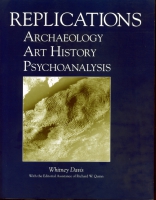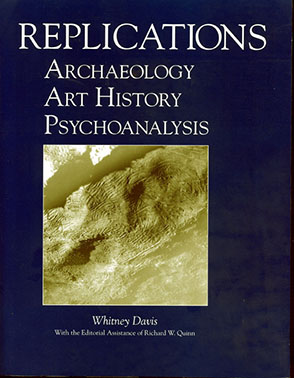Replications
Archaeology, Art History, Psychoanalysis
Whitney Davis
“Arguing like an analytic philosopher with the skill of a well-trained art historian, Whitney Davis combines the rigorous erudition of a classical scholar with an absolutely contemporary sensibility. Ferociously intelligent, he focuses on fundamental conceptual issues. Art historians, philosophers of art, and cultural historians will want to read this book with as much close attention as it devotes to the texts and images Davis discusses.”
- Media
- Description
- Reviews
- Bio
- Subjects
Winner of the 1998 Gradiva Award from the National Association for the Advancement of Psychoanalysis
Because art history is equally interested in the material properties and in the personal and cultural meaning of artifacts and images, it can mediate the interests of archaeology and psychoanalysis. Thus Replications explores not only the differences between but also the common ground shared by archaeology, art history, and psychoanalysis—focusing, for example, on their mutual interest in the "style" of artifacts or image making, their need to treat the "nonintentional" or "nonmeaningful" element in production, and their models of the subjective and social transmission of replications in the life history of persons and communities.
Replications is an original contribution to an emerging field of study in domains as diverse as philosophy, cognitive science, connoisseurship, and cultural studies—the intersection of the material and the meaningful in the human production of artifacts. Davis develops formal models for and theories about this relationship, exploring the ideas of a number of philosophers, historians, and critics and presenting his own distinctive conceptual analysis.
“Arguing like an analytic philosopher with the skill of a well-trained art historian, Whitney Davis combines the rigorous erudition of a classical scholar with an absolutely contemporary sensibility. Ferociously intelligent, he focuses on fundamental conceptual issues. Art historians, philosophers of art, and cultural historians will want to read this book with as much close attention as it devotes to the texts and images Davis discusses.”
Whitney Davis is John Evans Professor of Art History and Director of the Alice Berline Kaplan Center for the Humanities at Northwestern University. He is the author of, most recently, Pacing the World: Construction in the Sculpture of David Rabinowitch (1996), Drawing the Dream: Homosexuality, Interpretation, and Freud's "Wolf Man" (1995), and Masking the Blow: The Scene of Representation in Late Prehistoric Egyptian Art (1992).
Mailing List
Subscribe to our mailing list and be notified about new titles, journals and catalogs.




